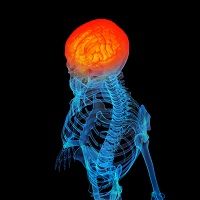Article
Research Warns Against Bevacizumab for AMD Shortly after Stroke
Author(s):
The mortality rate of AMD patients who received a bevacizumab injection 3 or 6 months after stroke was, in the study’s words, “worrying†compared to the rate of those who did not.

In a poster presented at the American Academy of Ophthalmology 2016 Meeting in Chicago, Israeli researchers issued a warning regarding the use of bevacizumab for age-related macular degeneration (AMD) not long after cerebrovascular events.
High-risk, by their standards, were patients who had previously suffered stroke or transient ischemic attack (TIA). The study examined the records of 948 patients with AMD either previous diagnosis who had been prescribed bevacizumab, and matched them by gender and age, and diagnoses with a cohort that had never been prescribed any anti-vascular endothelial growth factor (anti-VEGF) such as bevacizumab.
The primary outcome metric was survival, adjusting for other health factors like smoking, alcoholism, obesity, and other heart or liver conditions.
The study found that over 73 months of follow-up, patients who received bevacizumab injection within distances of 3 and 6 months after stroke or TIA had a noticeably higher mortality rate than non-VEGF survivors of such cerebrovascular events. 15 patients in the cohort received the injection within 3 months and 34 did within 6 months, with 7 and 15 dying during the course of follow-up, respectively. That combined rate of about 45% was markedly, in the study’s words, “worrying” compared to the rate of about 20% in the non-bevacizumab group.
At injection distances of 12 and 24 months, the disparity still existed, but shrank significantly. As always, more data will be needed to confirm whether the study’s findings are anomalous or a true warning. The study recommends that such data reviews occur for other anti-VEGF agents used for AMD.
Related Coverage:
Strong Social Circles Shorten Stays in Stroke Rehab Facilities
Difluprednate Shows Itself Effective for Intermediate Uveitis Treatment





